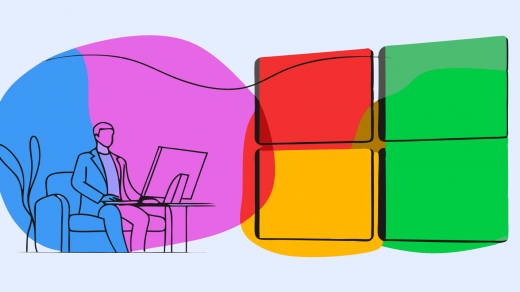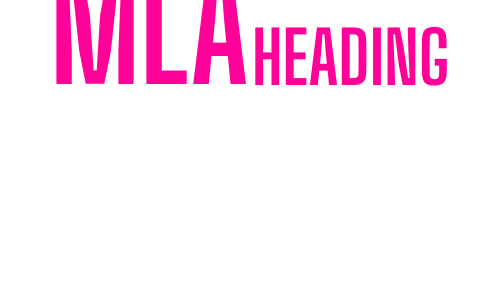In the digital age, academic research has become increasingly dependent on online resources. Scholarly journals, government reports, digital archives, blogs, and even social media posts often form the backbone of modern research writing. However, this reliance introduces a new challenge that traditional print-based research rarely faced: link rot — the gradual disappearance or alteration of web sources.
When a student or scholar revisits a source months or years later, they might find that the link leads nowhere: the website is gone, the page has been moved, or the content has changed entirely. This creates not only practical frustration but also ethical and methodological issues for academic citation.
This essay explores how to manage broken links and disappearing online sources within MLA citation standards. It explains the nature of link rot, why it occurs, and how MLA guidelines help preserve research integrity. It also outlines practical strategies for citing, archiving, and updating references, ensuring that academic work remains transparent and verifiable.
The Nature of “Link Rot”
The term link rot refers to the process by which hyperlinks in academic writing or web documents become invalid over time. Studies estimate that more than 30% of web citations become inaccessible within two years, especially in fast-moving fields such as journalism, digital humanities, and social sciences.
There are several reasons for this phenomenon:
-
Website reorganization: Institutions frequently redesign or migrate their websites, changing URLs in the process.
-
Content deletion: Articles, reports, or posts may be removed for legal, financial, or editorial reasons.
-
Domain expiration: When ownership of a web domain lapses, all hosted content disappears.
-
Dynamic web content: Pages generated by scripts or databases may not produce stable URLs.
Link rot undermines a fundamental principle of scholarship: verifiability. A citation is not merely a reference—it’s an invitation to check, verify, and build upon previous work. When a source vanishes, that chain of scholarly accountability weakens.
Why MLA Style Matters
MLA style, widely used in the humanities, particularly in literature, cultural studies, and language arts, provides flexible yet rigorous guidelines for citing electronic sources. Its emphasis on clarity, consistency, and accessibility helps mitigate the challenges of digital impermanence.
Unlike older styles that treated online sources as peripheral, MLA (particularly since its 8th and 9th editions) recognizes the web as a central medium of publication. MLA now encourages the inclusion of stable identifiers such as DOIs, permalinks, and archived versions whenever possible.
MLA’s flexibility is a strength: it prioritizes the principle of retrievability — giving readers enough information to find a source, even if the original URL fails.
Common Scenarios and MLA Responses
| Scenario | Problem | MLA-Recommended Solution |
|---|---|---|
| The page is moved to a new URL | Old link leads to 404 error | Update the citation with the new URL; include access date if content may change |
| The source has been deleted | Content is no longer available online | Provide an archived version (e.g., via Wayback Machine) or full publication details |
| The website is permanently offline | Domain expired or deleted | Use alternative identifiers such as DOI, JSTOR link, or library archive |
| Content has changed significantly | Updated or revised page differs from original | Cite the version used and note the date of access |
| The author has removed or replaced the post | Ethical or copyright removal | Retain citation but include note on disappearance or change |
MLA Guidelines on Disappearing Sources
According to the MLA Handbook (9th edition), online citations should aim to include:
-
Author(s) – The individual or organization responsible for the content.
-
Title of the Source – In quotation marks if part of a larger work, in italics if independent.
-
Title of the Container – The website or database name.
-
Version or Number – If applicable (edition, volume, issue).
-
Publisher – The sponsoring organization or entity.
-
Publication Date – The original date of posting or last update.
-
Location – Typically the URL or DOI.
-
Access Date – The date the researcher last viewed the page.
When a source disappears, MLA recommends keeping as much of this metadata as possible — even if the URL is broken. This preserves the intellectual trail and gives future readers a basis for recovery.
The Ethics of Citing Disappearing Sources
Ethical citation is not only about giving credit but also about preserving intellectual honesty. When citing an online source that later disappears, a writer faces a dilemma: should the reference be removed, replaced, or noted as missing?
Deleting the citation entirely risks erasing intellectual evidence, while keeping a dead link may frustrate readers. The responsible approach is transparency: acknowledging the disappearance while maintaining the citation record.
For example, MLA allows writers to add notes such as:
(Accessed 5 June 2022; page no longer available as of March 2025.)
This small addition transforms a dead end into a traceable path — evidence that the author consulted the material in good faith, even if it no longer exists online.
Using Archival Tools
Modern researchers have access to several powerful tools for combating link rot. These services capture and preserve digital content, allowing scholars to cite stable versions.
| Tool / Platform | Function | Best Use Case |
|---|---|---|
| Internet Archive: Wayback Machine | Captures and stores snapshots of web pages | Best for general websites and public online content |
| Perma.cc | Creates permanent, court-citable archived links | Ideal for academic journals, universities, and legal writing |
| archive.today (archive.ph) | Instant archival and timestamping | Good for news articles or volatile web content |
| DOI (Digital Object Identifier) | Provides stable identifier for academic publications | Best for scholarly articles and books |
| Institutional Repositories | University or library-based archives | Use for research papers and open-access materials |
MLA citations can include these permanent links instead of — or alongside — the original URL.
Example:
“The Future of Energy Innovation.” World Energy Forum, 2021, www.worldenergyforum.org/article123. Archived at perma.cc/AB12-CD34.
This not only fulfills citation requirements but also demonstrates responsible research practice.
Case Studies: When Sources Vanish
Case 1: The Disappearing Blog Post
Imagine citing a cultural critic’s 2018 blog post on digital identity. When revisited in 2025, the blog domain is deleted. The post has no DOI and was not preserved.
Solution:
Retain the citation with available metadata and note the disappearance. For example:
Jensen, Lara. “The Mirror Self: Identity in the Age of Algorithms.” Medium, 15 May 2018, medium.com/@larajensen/the-mirror-self. Accessed 22 Oct. 2019; page no longer available.
Even though the link no longer works, the citation preserves the author, title, and context — essential for scholarly transparency.
Case 2: Moved Government Report
A student cites a 2020 report from the U.S. Department of Energy. In 2024, the department reorganizes its site, changing the link.
Solution:
Update the citation with the new URL, retaining the access date:
United States, Department of Energy. Clean Hydrogen Strategy and Roadmap. 2020, energy.gov/clean-hydrogen-strategy. Accessed 12 May 2024.
In this case, no ethical issue arises — the content remains accessible but relocated.
Case 3: Altered or Revised Content
Suppose a company modifies a white paper on sustainability after public criticism. The 2021 version differs significantly from the 2025 update.
Solution:
Cite the original version with the access date to indicate which iteration was used:
Sustainable Futures Report 2021. GreenTech Solutions, 2021. greentech.com/reports/2021-futures. Accessed 3 Nov. 2022 (report since revised).
This distinction is crucial in academic writing, where even subtle textual changes may alter interpretation or evidence.
The Problem of “Version Drift”
A subtler form of link rot is version drift — when a page still exists but the content has changed enough that it no longer matches the source originally cited. Unlike a dead link, this can go unnoticed, quietly undermining the reliability of scholarship.
For instance, quoting a statistic from a government webpage in 2021 might lead to confusion if the same page now displays updated 2025 data. Readers may wrongly assume the newer figure was used.
To prevent this, MLA emphasizes access dates and encourages researchers to capture archived copies at the time of writing. Archiving provides a fixed reference point — a “snapshot in time” that preserves the integrity of the argument.
When Updating or Correcting Citations
Over time, even published works may need citation updates. Academic journals often issue errata or corrections to fix broken links. For student writers, updating citations before final submission is essential.
Checklist for Updating MLA Citations:
-
Verify all URLs before submission.
-
Replace broken links with archived versions or new URLs.
-
Add access dates for all online sources.
-
Ensure that citation formatting matches the latest MLA edition.
-
Retain any relevant notes about disappeared or altered content.
This not only demonstrates professionalism but also aligns with the core value of MLA style: clarity and accountability.
The Role of Librarians and Digital Preservationists
Librarians play a crucial, though often invisible, role in combating link rot. Many university libraries subscribe to services like Perma.cc, allowing students and faculty to generate permanent links for their citations.
Digital preservation initiatives — including the LOCKSS (Lots of Copies Keep Stuff Safe) program and institutional repositories — ensure that even if websites disappear, copies of academic content remain stored securely.
Writers should be encouraged to collaborate with librarians early in the research process, ensuring that their sources are both credible and durable.
Table: Key MLA Strategies for Managing Broken or Disappearing Sources
| Problem Type | Action | MLA Example |
|---|---|---|
| Broken URL | Replace with archived version | Accessed 12 June 2024; archived at perma.cc/XY45-ZT67. |
| Changed Content | Cite date and note revision | (Report since updated in 2023). |
| Removed Page | Keep citation; note unavailability | (Page no longer available as of 2025). |
| Website Offline | Use DOI or institutional repository | doi.org/10.1000/example123. |
| Ephemeral Social Media Post | Include post date, platform, and author | @username. “Tweet text.” Twitter, 5 Mar. 2023.* |
Beyond MLA: The Larger Issue of Digital Permanence
While MLA provides tools for responsible citation, the larger issue transcends formatting rules. The internet, once thought to be eternal, is in fact fragile. Websites vanish, archives decay, and even cloud services can fail. Scholars and students, therefore, carry a shared responsibility to treat online information as cultural memory, not disposable content.
Academic citation is not only about style — it’s about preserving evidence for future generations. Each citation is a thread in the fabric of knowledge. When that thread breaks, the whole pattern weakens.
Conclusion
The challenge of broken links and disappearing online sources forces writers to confront a paradox of modern scholarship: knowledge is more accessible than ever, yet more transient.
By applying MLA’s adaptable framework — emphasizing metadata, access dates, and archival links — researchers can maintain the integrity of their work even as the web evolves. Tools like the Wayback Machine and Perma.cc empower writers to preserve digital footprints, ensuring that academic discourse remains transparent and verifiable.
Ultimately, the goal is not to resist technological change but to adapt scholarly practices to the digital world responsibly. Every well-documented citation becomes an act of preservation — a small defense against the entropy of the internet.
The MLA approach teaches us that academic rigor in the 21st century is not only about accuracy in words but also about stewardship of information — keeping the record of human thought alive, link by link.




